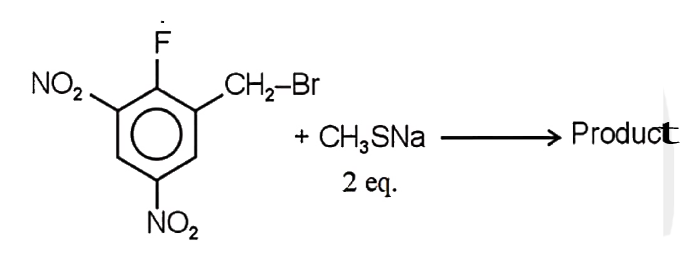Which of the following is correct reagrding initial gaseous mixture used and final products which were obtained during Miller's experiment?
Methane, ammonia, hydrogen cyanide (Gaseous Mixture) Adenine, glycine asperic acid (Final products)
Methane, hydrogen gas, Carbon dioxide (Gaseous mixture) Hydrogen cyanide, adenine, glycine (Final products)
Methane, hydrogen gas, ammonia, water vapour (Gaseous mixture) Alanine, glycine aspartic acid ( Final products)
Ammonia, hydrogen gas, water, hydrogen cyanide (Gaseous mixture) Adenine, urea glycine (Final products)
The correct Answer is:C
To answer the question regarding the initial gaseous mixture used and the final products obtained during Miller's experiment, we can follow these steps:
1. Understanding Miller's Experiment:
- In 1952, Stanley Miller conducted an experiment to simulate the conditions of early Earth to understand how organic compounds could form from inorganic substances.
2. Initial Gaseous Mixture:
- Miller used a mixture of gases that he believed were present in the early Earth's atmosphere. This mixture included:
- Hydrogen gas (H2)
- Methane (CH4)
- Ammonia (NH3)
- Water vapor (H2O)
3. Experimental Setup:
- The gases were placed in a flask, and electrical sparks were introduced to simulate lightning, which was thought to be a source of energy on early Earth.
4. Final Products:
- After running the experiment for a few days, Miller analyzed the contents of the flask and found that several amino acids had formed. The key amino acids identified included:
- Glycine
- Alpha-alanine
- Beta-alanine
- Aspartic acid
- Aminobutyric acid
5. Correct Option:
- Based on the information, the correct option regarding the initial gaseous mixture and the final products is:
- Initial Gaseous Mixture: Hydrogen, Methane, Ammonia, and Water Vapor
- Final Products: Glycine, Alpha-alanine, Aspartic acid, etc.
Conclusion:
The correct answer to the question is that the initial gaseous mixture consisted of hydrogen, methane, ammonia, and water vapor, and the final products included amino acids like glycine and aspartic acid.
---
- In 1952, Stanley Miller conducted an experiment to simulate the conditions of early Earth to understand how organic compounds could form from inorganic substances.
- Miller used a mixture of gases that he believed were present in the early Earth's atmosphere. This mixture included:
- Hydrogen gas (H2)
- Methane (CH4)
- Ammonia (NH3)
- Water vapor (H2O)
- The gases were placed in a flask, and electrical sparks were introduced to simulate lightning, which was thought to be a source of energy on early Earth.
- After running the experiment for a few days, Miller analyzed the contents of the flask and found that several amino acids had formed. The key amino acids identified included:
- Glycine
- Alpha-alanine
- Beta-alanine
- Aspartic acid
- Aminobutyric acid
- Based on the information, the correct option regarding the initial gaseous mixture and the final products is:
- Initial Gaseous Mixture: Hydrogen, Methane, Ammonia, and Water Vapor
- Final Products: Glycine, Alpha-alanine, Aspartic acid, etc.
The correct answer to the question is that the initial gaseous mixture consisted of hydrogen, methane, ammonia, and water vapor, and the final products included amino acids like glycine and aspartic acid.
Topper's Solved these Questions
Similar Questions
Knowledge Check
Which was absent in Miller's experiment?
AVacuum pumpBElectrodesCCondenserDNone of these
Which of the following is not correctly match the final major product?
View SolutionWhich of the following are used as free radical chain initiators?
View SolutionWhich of the following algae is used to obtain agar?
View SolutionWhich of the following method is used during abortion ?
View SolutionWhich of the following method is used during abortion ?
View SolutionWhich of the following reaction will not form racemic mixture as product?
View SolutionWhich of the following reaction will not form racemic mixture as product?
View Solution

